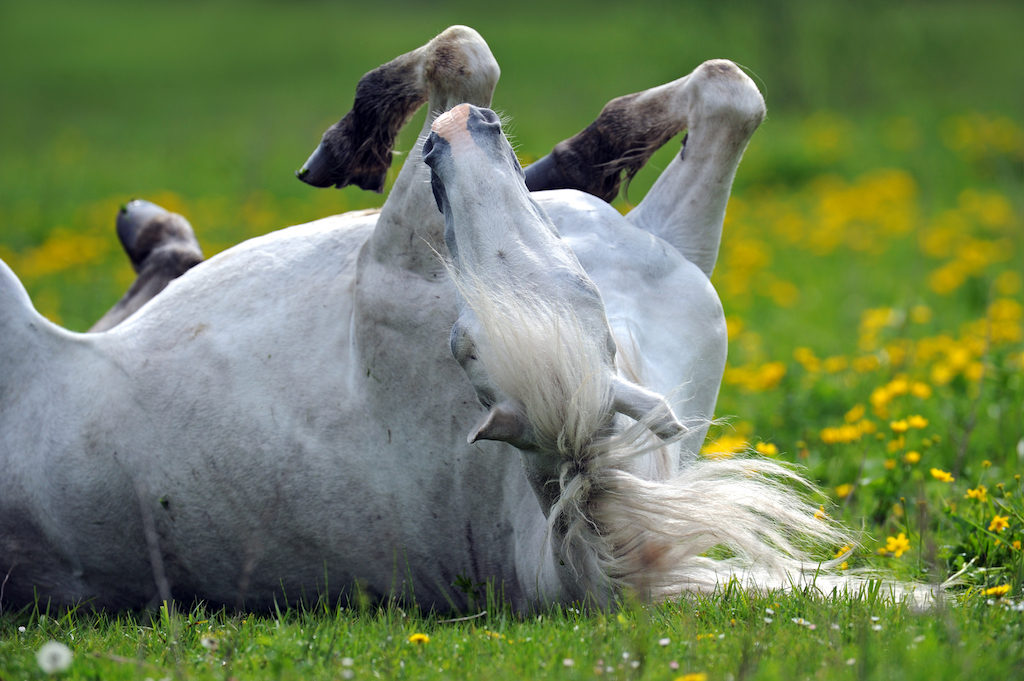
It’s that awkward time of year again – some lovely warm days followed by cold nights and then days of unsettled temperatures and drizzle. Horse owners are in that usual seasonal phase of ‘covers on or off?’ decision-making.
The weather can be very changeable from August through to December, including some rather spectacular rain and thunderstorms, but it’s not only cold weather that horse owners have to be aware of: they should also understand the impact of so-called ‘cycling’ temperatures during day and night.
As in all animals, horses adapt to constant climatic conditions better, and find cycling temperatures more difficult to deal with. Although New Zealand enjoys a much milder climate than many other countries, it is still a factor that must be taken into consideration when looking after your equine friends. This is especially true for those owners who cover their horses to an extreme extent. We are all familiar with heat-stressed horses which are turned out in their thick winter woollies when the temperature in the day is approaching 20°C.
So what effect do these cycling temperatures have on horses and how does this affect their nutritional needs? Horses have a normal body temperature range of 37-38°C, and the hypothalamus gland in the brain acts as the body’s own thermostat to kick-start protective mechanisms to maintain this level of internal temperature. In cold weather, the consumption of fibrous forages (such as hays or silages) helps to maintain body temperature from the heat produced from heightened gut activity and from the bacterial fermentation processes involved in fibre digestion in the hind gut. Animals (and people) typically become more lethargic when they are too hot – so monitoring your horse’s behaviour can be useful when you are trying to judge whether the covers should come off that day or not.
In these spring months of hot days and cold nights, it is important to try to keep their body temperature as constant as possible. Horses who have heavy covers on during warmer days will be sweating under them – which means they will be losing electrolyte minerals, so always make sure that pastured horses have access to a mineral block in the paddock to help replace these lost nutrients. In addition, feeding high-fibre forage diets will increase the heat they generate themselves, so this should be limited during hotter periods (or replaced with compound feed) and mainly supplied during colder times, eg. overnight.
The amount of energy a horse requires to keep warm when it is cold is determined by a combination of: (a) the form of the feed, as discussed above – whether it is forage or grain-based; and (b) its own energy reserves from fat stores. Horses who are underfed during cold weather will drop weight, often alarmingly quickly, and may take a considerable amount of time to regain this condition. Keeping the horse warm by supplying suitable shelter or covers will reduce the impact of the cold weather and help maintain body weight. Cold shock is a factor of rain and wind-chill as well – so having somewhere they can get out of the worst of the weather is beneficial to maintaining body condition score.
It is easy to forget how much extra a horse may require in energy to keep warm during the winter and cold spring nights. If you have horses who are turned out for the winter, then obviously they should have access to good quality forage to meet their basic needs for fibre as well as some source of the other nutrients required – and there are broad spectrum feed blocks that can help achieve this. These tend to be better than the simple salt licks, which may not supply all their needs – check on the packaging or with the manufacturer if you are not sure. Remember that grass which is not actively growing will be much lower in nutrients, and your horse may lose not only fat, but also muscle as a result.
An easy way to up your horse’s feed during the cold is to take his normal feeding levels and increase them to the next level, either by using the next weight range up on the feed bag guide or by taking it from, say, a ‘good doer’ level of energy intake to a ‘bad doer’ level.
Similarly, if your horse is in work, then increase his feed to the next stage up (from medium to hard work classifications). Each horse will respond differently, of course, depending on how well it utilises its feed. It is also important to cover them according to the day and night temperatures, to prevent the cycling effect making them too hot and sweaty and then getting cold and chilled.
So, for the next few weeks it’s likely to be the same old story – covers on and off!








